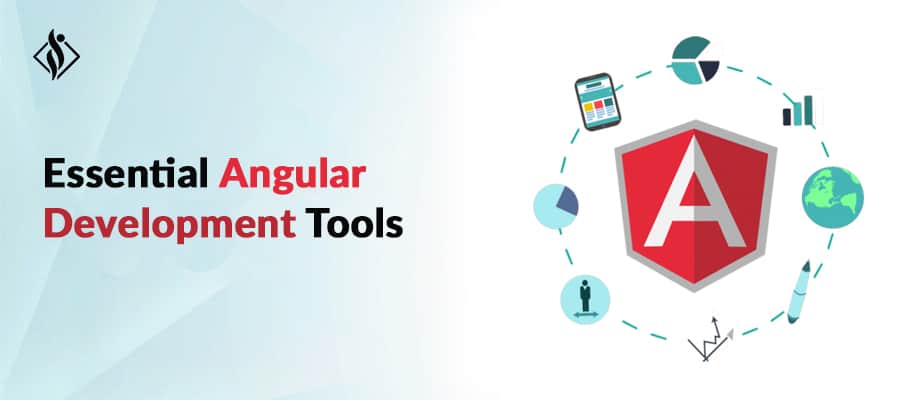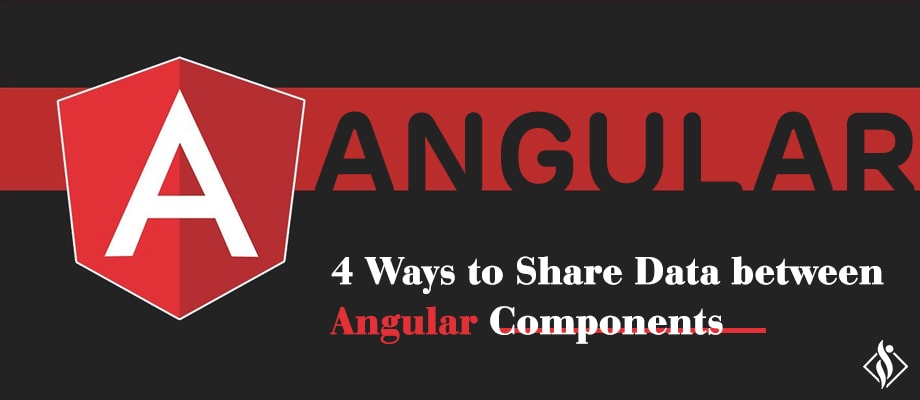Home » Angular Development » Top 15 Angular Component Libraries Every Developer Should Know
Top 15 Angular Component Libraries Every Developer Should Know

In the world of web development, Angular stands out as a top framework. One of its main attractions is its many component libraries. But what are these libraries, and why are they important? Let’s dive into the world of Angular component libraries.
What is a Component Library?
A component library is like a developer’s toolset. It is a pre-designed set of features or components that can be smoothly integrated into online applications. Rather than creating each UI element from scratch, Angular developers can use these libraries to ensure consistency, save time, and improve the overall user experience.
Top 15 Angular Component Theme Libraries
Angular offers a wide range of tools for web developers. One key tool is the component library, which has ready-made elements to make Angular development faster and better. Let’s check out the top 15 libraries and their features.
1. Angular Material
Overview: Born from Google’s vision, Angular Material is the epitome of Material Design principles tailored for Angular applications. It encapsulates a modern design philosophy, ensuring applications are sleek, user-friendly, and intuitive.
Features:
- Comprehensive suite of over 30 UI components
- A vast array of UI components, from simple buttons to intricate navigation structures.
- Dynamic theming capabilities, allowing applications to switch between light and dark modes seamlessly.
- Fluid animations and transitions that enhance user interactions.
- A strong emphasis on accessibility, ensuring applications cater to all users, including those with disabilities.
2. NG Bootstrap
Overview: NG Bootstrap is where the robustness of Bootstrap meets the dynamism of Angular. It offers a seamless integration, eliminating the traditional reliance on jQuery, and presents a more Angular-centric approach.
Features:
- A suite of directives specifically designed for Bootstrap’s components, ensuring they work harmoniously within the Angular ecosystem.
- Advanced components like datepickers and carousels that are both functional and aesthetically pleasing.
- A responsive design ethos, ensuring applications look stellar across devices.
- A lightweight footprint, ensuring applications remain fast and efficient.
3. PrimeNG
Overview: PrimeNG is like a Swiss Army knife for Angular developers. It’s versatile, feature-rich, and caters to a wide array of UI requirements, from the basic to the highly intricate.
Features:
- A staggering collection of over 80 components, ensuring developers have a tool for every need.
- A plethora of themes and templates, allowing developers to tailor the look and feel of their applications.
- Mobile-optimized components, ensuring touch-friendly interfaces.
- A vibrant community, offering support, updates, and continuous enhancements.
4. Clarity
Overview: Clarity, with its emphasis on clarity and consistency, ensures that even the most complex applications remain user-centric. Developed by VMware, it brings together a design system, UX guidelines, and a set of Angular components.
Features:
- A focus on data visualization, offering intricate grids and charts.
- Intuitive form controls, ensuring user inputs are seamless.
- Modular architecture, allowing developers to integrate only the components they need.
- A set of icons and utilities that enhance the design and user experience.
5. NGX-Bootstrap
Overview: NGX-Bootstrap represents a fresh perspective on integrating Bootstrap with Angular. Tailored specifically for Angular, it offers a rich set of components without any dependencies on third-party JavaScript.
Features:
- A comprehensive collection of Bootstrap components, redesigned for Angular.
- Carousel component for dynamic image sliders.
- Tooltips and popovers with extensive customization options.
- Accordion component for collapsible content sections, enhancing UI organization.
6. ApexCharts
Overview: For those who believe in the power of data visualization, ApexCharts is a dream come true. It offers a canvas for developers to paint their data-driven narratives in the most interactive manner.
Features:
- A plethora of chart types, including bar, line, pie, and radial.
- Dynamic event handling, allowing real-time data updates.
- Annotations for highlighting specific data points or trends.
- Export capabilities, enabling users to save charts in various formats.
7. Nebular
Overview: Nebular is a beacon for enterprise-grade frontend development. It offers a cohesive set of components, guidelines, and tools, ensuring applications are both functional and aesthetically pleasing.
Features:
- Multiple visual themes, catering to different design preferences.
- Authentication modules, ensuring applications are secure.
- A set of SVG icons that adhere to a unified design language.
- Layout services, allowing dynamic component loading and organization.
8. Core UI
Overview: Core UI, built on the foundation of Bootstrap 4, is a powerhouse for admin templates. It offers a plethora of ready-to-use components, ensuring backend interfaces are as polished as frontend ones.
Features:
- Multiple layout configurations for varied UI needs.
- Widgets tailored for analytics, user data, and notifications.
- Customizable color schemes to align with brand aesthetics.
- Integrated plugins for enhanced functionality, such as charts and tables.
9. Ignite UI for Angular
Overview: Ignite UI, developed by Infragistics, is a comprehensive suite of Material-based UI widgets. Designed for high performance and deep configurability, it’s a go-to choice for intricate web applications.
Features:
- High-performance data grids with features like virtualization, filtering, and sorting.
- Drag-and-drop directives, enabling intuitive UI design.
- Geospatial map components, allowing for intricate map visualizations.
- Excel library, letting users interact with spreadsheet data directly within the application.
10. Kendo UI
Overview: Kendo UI is a holistic framework designed for crafting visually stunning and interactive web applications. With a focus on user experience, it offers a plethora of components that are both functional and visually appealing.
Features:
- Over 70 UI components, ranging from simple dropdowns to complex schedulers.
- Seamless integration with popular CSS frameworks, including Bootstrap.
- Grids equipped with advanced features like filtering, grouping, and sorting.
- A theme builder tool, allowing developers to customize the look and feel of their applications.
11. NG-ZORRO
Overview: Embracing the aesthetics of Ant Design, NG-ZORRO offers a design language tailored for enterprise applications. It combines the principles of Ant Design with the power of Angular for a seamless development experience.
Features:
- Components meticulously crafted to adhere to Ant Design specifications.
- Customizable themes using LESS variables.
- Comprehensive localization and internationalization support.
- A mobile-first approach, ensuring applications are responsive across devices.
12. Browserify
Overview: While not a traditional component library, Browserify plays a pivotal role in bundling dependencies, ensuring developers can use Node.js-style modules in the browser.
Features:
- Transforms Node modules for seamless browser usage.
- An extensive plugin system, allowing for added functionality.
- A streamlined build process, complete with source maps for easier debugging.
13. Prettier
Overview: Prettier stands as a guardian of code consistency. It’s an opinionated code formatter that ensures codebases remain clean, readable, and consistent across projects.
Features:
- Support for multiple languages and file formats.
- Seamless integration with most popular IDEs.
- A command-line interface, enabling batch formatting and integrations into build processes.
14. Bcrypt
Overview: In the digital age, security is paramount. Bcrypt is a stalwart in the realm of password hashing, ensuring user data remains secure and impervious to breaches.
Features:
- Robust algorithms resistant to brute-force and rainbow table attacks.
- Salt generation for added password security.
- Asynchronous API, ensuring non-blocking operations and optimized performance.
15. Socket.io
Overview: Socket.io is the bridge to real-time web applications. It facilitates dynamic, bidirectional communication, making it ideal for chat applications, live feeds, and more.
Features:
- Real-time bidirectional event-based communication.
- Supports broadcasting to multiple sockets, enabling group chats and notifications.
- Adapters for scaling across multiple nodes, ensuring applications remain fast even with numerous concurrent users.
What are the Benefits of using an Angular UI Library?
- Efficiency: Pre-built components expedite the development process.
- Consistency: A uniform look and feel enhance the user experience.
- Customization: Libraries often allow tweaks to align with brand aesthetics.
- Community Support: Popular libraries come with robust community backing, ensuring continuous updates and troubleshooting assistance.
Future Trends in Angular Component Libraries
Angular UI and theme libraries are constantly changing. As mobile-friendly designs and user-focused designs become more important, we can expect these libraries to adapt accordingly.
- AI and ML Integration: As Artificial Intelligence (AI) and Machine Learning (ML) continue to develop the tech landscape; Angular component libraries are expected to offer components that easily integrate with these technologies. This means libraries might provide components that can easily connect with AI/ML models, enabling developers to incorporate predictive analytics, chatbots, and other intelligent features directly into their Angular applications.
- Enhanced Augmented Reality (AR) and Virtual Reality (VR) Support: As AR and VR become more popular across a variety of industries, including gaming, education, and healthcare, Angular theme libraries will most likely include components designed specifically for these immersive experiences. This will enable developers to create web applications that interact with AR and VR devices, providing users with a more rich and engaging experience.
- Serverless Components: The serverless architecture is gaining popularity due to its scalability and low cost. In terms of technology trends, we can expect Angular component libraries to provide components suited for serverless settings. These components would perform activities such as real-time data retrieval, background processing, and authentication without requiring a standard backend server setup.
- Eco-friendly and Sustainable Web Components: As the world becomes increasingly aware of its carbon footprint, there is a growing emphasis on developing eco-friendly digital solutions. Angular component libraries may introduce components that are optimized for performance while consuming the least amount of energy. This comprises components that decrease needless data fetching, improve animations, and assure efficient rendering, all of which contribute to a more environmentally friendly online experience.
- Advanced Personalization and User Experience (UX) Components: Personalization is essential for increasing user engagement. Future Angular theme libraries will most likely focus on components with greater personalization capabilities. This could include adaptive UI components that alter based on user activity as well as components that provide multilingual and cultural adaptability, ensuring a personalized experience for users from various backgrounds.
Conclusion
Navigating the world of Angular UI component libraries can be overwhelming due to the many options available. It’s essential to pick a library that fits your project’s needs. With the right tools, you can create amazing web developments.
I am working as Jr. Full Stack Developer (.NET/Angular) at Samarpan Infotech. I've good analytical thinking and collaboration skills, and I love working with a team.



